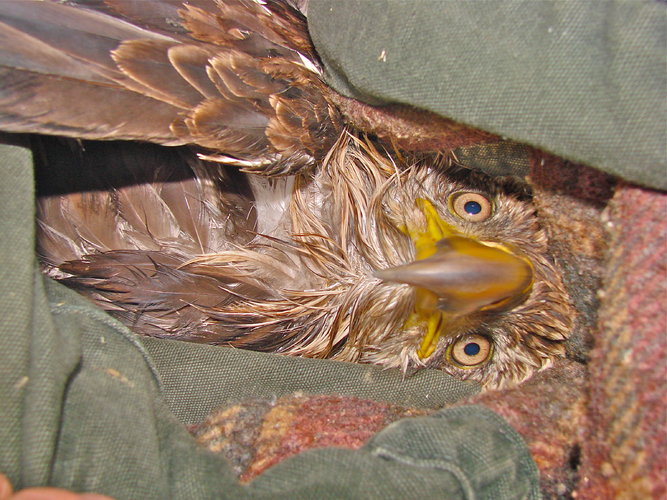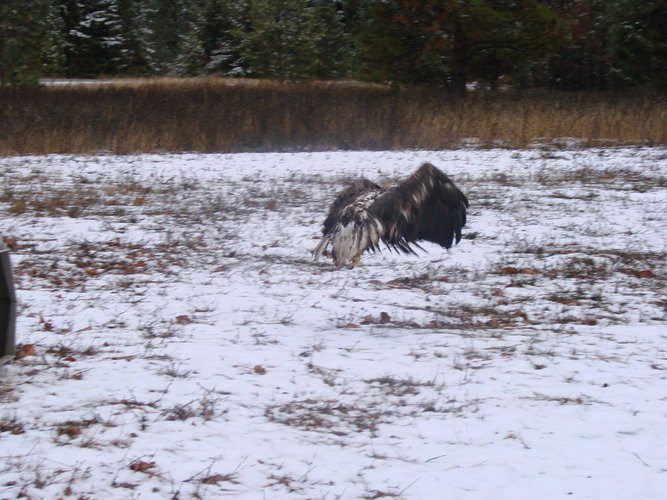kwyeewyk
Well-known member
Sounds like it's mostly related to the small size of the lead fragments from big game bullets that allow it to be easily ingested/absorbed by eagles...
Upon impact, lead rifle bullets typically shatter into several hundred fragments distributed throughout the carcass and viscera of a target animal. Estimates indicate that a single big-game bullet (e.g., 100–180 grains) impact results in an average of 235 fragments in the eviscerated carcass and 170 in the viscera (Hunt et al. 2006, 2009, Knott et al. 2010). This can substantially increase the risk of lead exposure to scavenging Golden Eagles feeding on shot carcasses and offal during the hunting season (Kelly et al. 2011, Bedrosian et al. 2012, Cruz-Martinez et al. 2012, Legagneux et al. 2014). Increased numbers of small lead fragments in carcasses result in lead being easily ingested because of their larger surface area, resulting in lead being readily absorbed into the blood stream by scavengers (Barltrop and Meek 1979).

 bioone.org
bioone.org
Upon impact, lead rifle bullets typically shatter into several hundred fragments distributed throughout the carcass and viscera of a target animal. Estimates indicate that a single big-game bullet (e.g., 100–180 grains) impact results in an average of 235 fragments in the eviscerated carcass and 170 in the viscera (Hunt et al. 2006, 2009, Knott et al. 2010). This can substantially increase the risk of lead exposure to scavenging Golden Eagles feeding on shot carcasses and offal during the hunting season (Kelly et al. 2011, Bedrosian et al. 2012, Cruz-Martinez et al. 2012, Legagneux et al. 2014). Increased numbers of small lead fragments in carcasses result in lead being easily ingested because of their larger surface area, resulting in lead being readily absorbed into the blood stream by scavengers (Barltrop and Meek 1979).

Characterizing Golden Eagle Risk to Lead and Anticoagulant Rodenticide Exposure: A Review
Contaminant exposure is among the many threats to Golden Eagle (Aquila chrysaetos) populations throughout North America, particularly lead poisoning and anticoagulant rodenticides (AR). These threats may act in concert with others (e.g., lead poisoning and trauma associated with striking...
Last edited:






